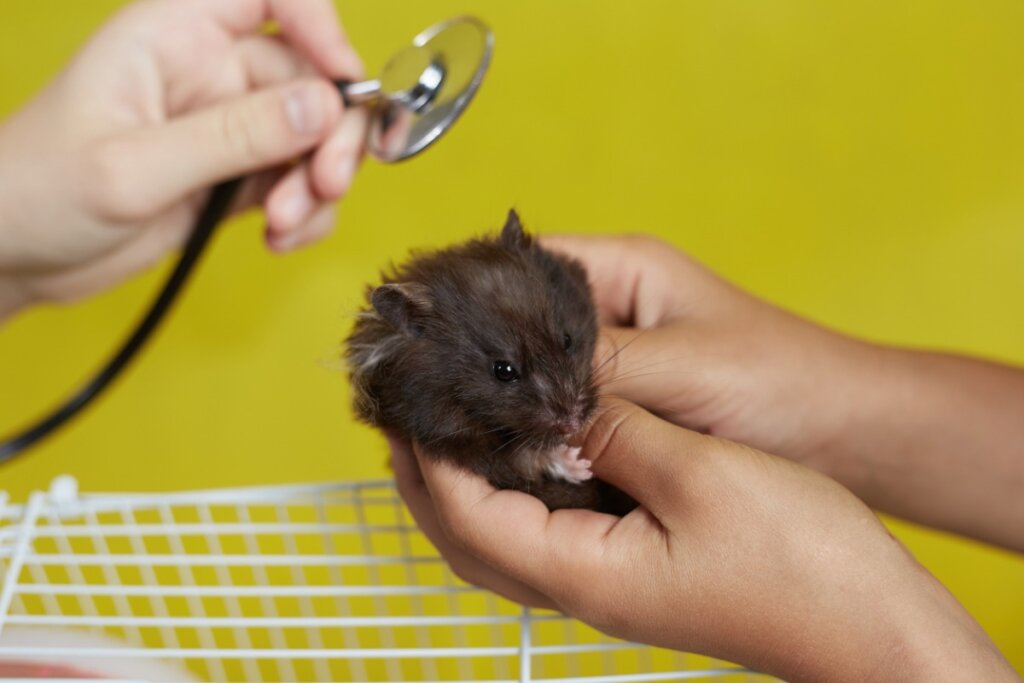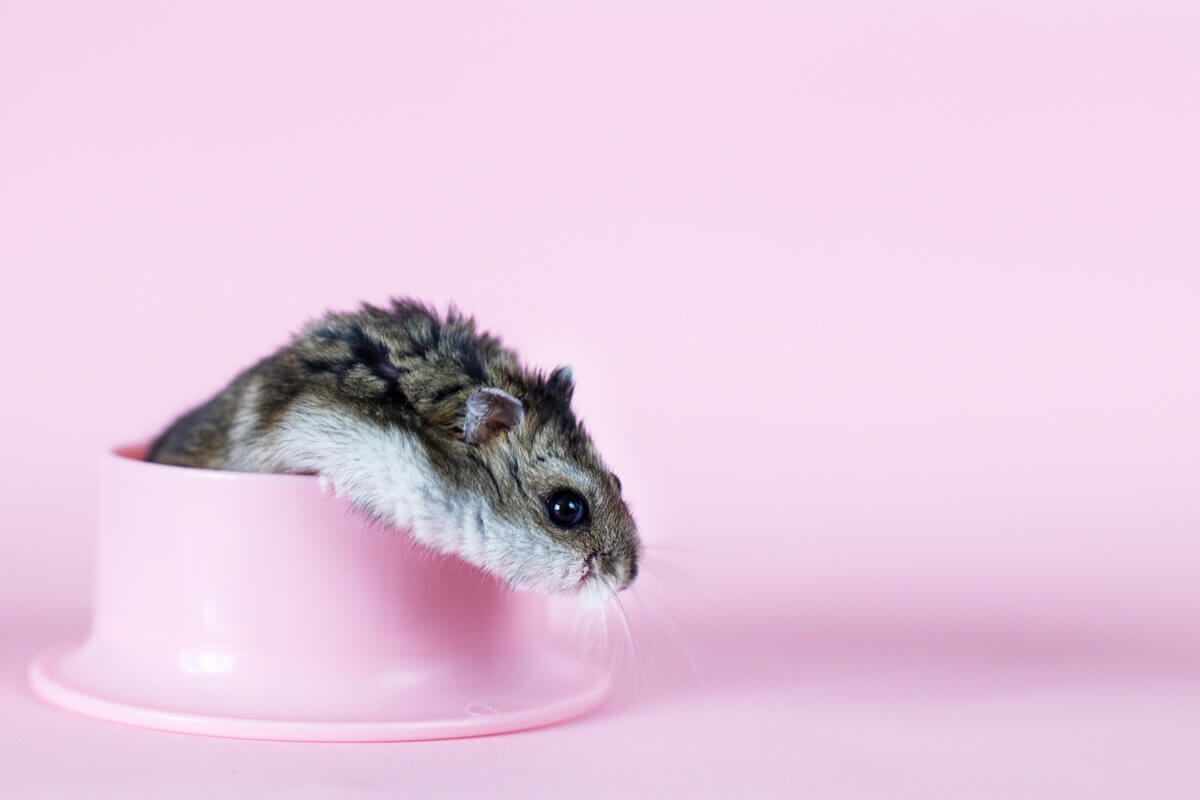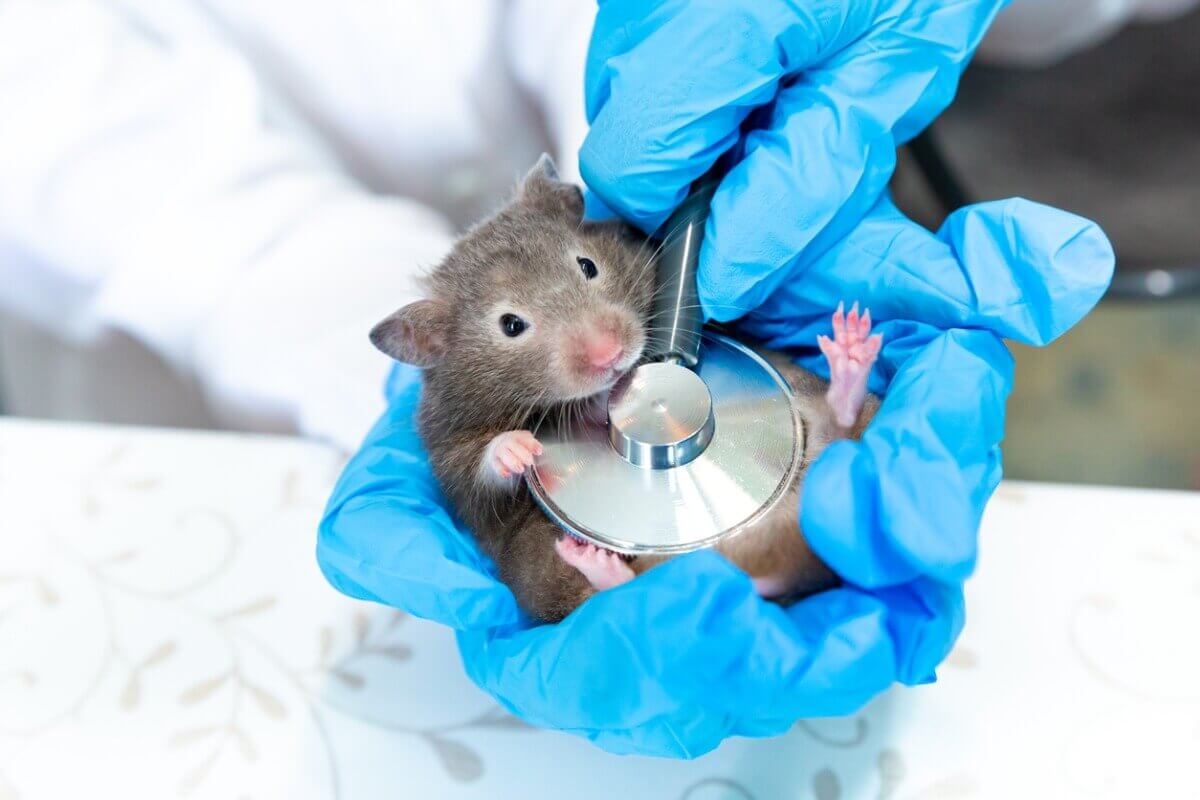12 Signs That Your Hamster's Going to Die

Animals are part of the family and their absence leaves a hole in our lives, whether they’re dogs, cats, birds, or, as in this case, rodents. In the moments before their death, ensuring the absence of suffering of the animal must be the priority. That’s why it’s important that you know the most significant symptoms that a hamster’s going to die.
This article deals with a delicate subject that each person processes as best they can: Death. Therefore, all the information you’ll find here is aimed at helping you give the best care to your small family member until it leaves this world.
12 symptoms that your hamster’s going to die
Although perceiving when an animal is close to death has a certain intuitive content, there are some signs that aren’t so easy to interpret. Here are the most representative as far as hamsters are concerned.
1. Lack of appetite
One of the most classic symptoms that a hamster’s going to die is anorexia or lack of appetite. Generally, an animal that refuses to eat for a continuous period of time – and shows other pathological signs – does so because it feels very sick.

2. Prostration
A hamster lying on its side that doesn’t move to eat, groom itself, or drink may be close to death. This is an easily recognizable condition, as movement is almost non-existent and breathing is barely visible.
3. Continuous diarrhea or wet tail
Diarrhea, as well as being a process that severely dehydrates the animal, can be a sign of the disease known as wet tail. This ailment is capable of killing a hamster within 48-72 hours. It’s characterized by diarrhea with very liquid feces, which stain the perianal area of the rodent, hence the name wet tail. The feces are whitish in color and have a very unpleasant odor.
Although the prognosis isn’t at all favorable, running to the vet is the only option that could save your hamster in this case.
4. Anuria: The hamster has stopped urinating
In the last days of life, organic failures are happening. When it’s the kidney’s turn, the hamster will stop urinating. Generally, kidney failure is considered one of the unmistakable signs that a hamster’s going to die soon.
5. Skin problems
Skin and coat problems appear in most ailments when the animal is approaching death. You can find redness, dandruff, or notice that the hamster scratches a lot, for example. These clinical signs are usually caused by malfunctioning kidneys in the terminal stage.
6. Dull and unkempt fur
The fur is another of the clearest indicators that the animal is seriously ill. A hamster that is agonizing or very sick won’t be able to groom itself, giving it a dull, matted appearance.
7. Never leaves its shelter
When a rodent is seriously ill, it’ll look for a place to hide. If you see that it doesn’t leave its shelter during the night or stays in a corner, it means that something serious is wrong. Although it does not mean the death of the animal, it’s a sign of veterinary urgency.
8. Altered breathing
As a hamster is weakening, his breathing becomes irregular. It can be changeable, accelerating with each breath, or gradually decreasing until the animal stops breathing completely. This usually occurs when the animal is already prostrate.
9. Low body temperature
Thermoregulation is another function that the body is not able to perform properly when it’s close to death. The normal body temperature of a hamster is around 100 °F (38,3 °C). If you notice it’s colder than usual, it’s a sign that its body is no longer able to maintain its optimum temperature.
10. Lack of thirst
Like a lack of appetite, a hamster loses the desire to drink as it becomes weaker. This clinical sign often occurs along with prostration and other symptoms of severe malaise.
11. Mobility problems
This sign may occur due to the animal’s own life-ending illness– such as a neurodegenerative disorder–but hamsters approaching death have also been observed to be unable to move well. You’ll detect incoordination and lack of strength for the displacement in your pet, mainly.
12. Altered behavior
Although other signs aren’t so clear, a sudden change in behavior is always indicative that something’s wrong with the health of an animal. It may be more surly than usual due to discomfort, or it may seek your company and warmth. It’s heartbreaking, but your animal may feel it needs your protection if it’s suffering.

The toughest decision
In recent times, we’ve made great advances in our thinking about death and dying. Fortunately, more and more people are prioritizing the avoidance of their loved ones’ suffering before their own grief, which means much less pain for the dying.
This, unfortunately, doesn’t take away from the pain of having to make the decision to euthanize. It’ll be a difficult and painful time but, in time, you’ll have the peace of mind of having saved your pet from further suffering.
Finally, one last piece of advice: Your grief is valid. You have the right to process your grief as best you can, because the death of a loved one is heartbreaking, regardless of the species. Cry, lean on your loved ones, and let time pass until the memory of your friend is proof that sharing your life with it was one of the best decisions you could have made.
All cited sources were thoroughly reviewed by our team to ensure their quality, reliability, currency, and validity. The bibliography of this article was considered reliable and of academic or scientific accuracy.
- American Society for the Prevention of Cruelty to Animals. End of Life Care. (s. f.). Consultado el 19 de octubre de 2021 en: https://www.aspca.org/pet-care/general-pet-care/end-life-care
- Harper, L.(s. f.). Loss of a Pet. Best Friends Animal Society. Consultado el 19 de octubre de 2021 en: https://resources.bestfriends.org/article/loss-pet
- Brown, C., & M. Donnelly, T. (2012). Disease Problems of Small Rodents. Ferrets, Rabbits, and Rodents, 354–372. Recuperado de: https://doi.org/10.1016/B978-1-4160-6621-7.00027-0
- Miedel, E., & Hankenson, C. (2015). Chapter 5-Biology and diseases of hamsters. En: Fox, J., Anderson, L., & Whary, M. (Eds.). Laboratory Animal Medicine, 209-245. https://www.sciencedirect.com/science/article/pii/B9780124095274000055#s0155
- O’Neill, D. G., Kim, K., Brodbelt, D. C., Church, D. B., Pegram, C., & Baldrey, V. (2022). Demography, disorders and mortality of pet hamsters under primary veterinary care in the United Kingdom in 2016. The Journal of Small Animal Practice, 63(10), 747–755. Recuperado de: https://pubmed.ncbi.nlm.nih.gov/35732354/
- Quesenberry, K., & Donnelly, T. (2022). Disorders and diseases of hamster. MSD Veterinary Manual. Consultado el 23 de mayo de 2023 en: https://www.msdvetmanual.com/all-other-pets/hamsters/disorders-and-diseases-of-hamsters
- Royal Society for the Prevention of Cruelty to Animals. (2023). Hamster health and welfare. Consultado el 23 de mayo de 2023. https://www.rspca.org.uk/adviceandwelfare/pets/rodents/hamsters/health
- Royal Society for the Prevention of Cruelty to Animals. (s.f.). Hamster care advice, signs of illness. Consultado el 23 de mayo de 2023. https://www.rspca.org.uk/documents/1494939/7712578/Signs+of+illness+in+hamsters+%28PDF+179KB%29.pdf/676b120f-85b2-1cd1-fdd5-b82bf558932c?t=1559143356209
- Royal Veterinary College. (2022). Largest study reveals most common disorders and lifespan of pet hamsters in the UK. Consultado el 23 de mayo de 2023 en: https://www.rvc.ac.uk/vetcompass/news/largest-study-reveals-most-common-disorders-and-lifespan-of-pet-hamsters-in-the-uk
- The Humane Society of the United States. (2023). Is a hamster the right pet for you? Consultado el 23 de mayo de 2023 en: https://www.humanesociety.org/resources/hamster-right-pet-you
- The People’s Dispensary for Sick Animals. (s.f.). The ideal home for your hámster. Consultado el 23 de mayo de 2023 en: https://www.pdsa.org.uk/pet-help-and-advice/looking-after-your-pet/small-pets/the-ideal-home-for-your-hamster
